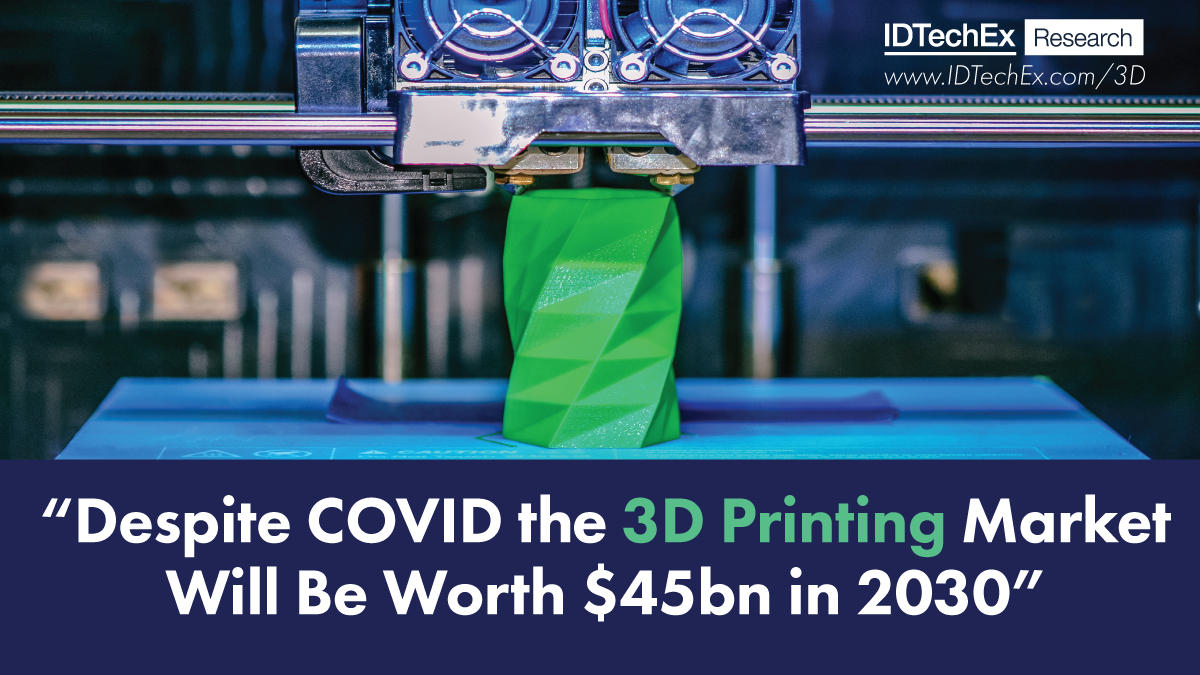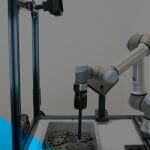The last decade has seen an explosion in 3D printing, among hobbyists and professional users alike. The ability to prototype – or even, increasingly, industrially produce – almost any component with just a CAD package and a 3D printer has transformed the manufacturing landscape. Although there are drawbacks to the process, including proportionate cost and scalability, recent improvements in 3D printing capabilities meant that pre-Covid-19, commentators predicted a bright future for this technology and the sector had been on a solid upward trajectory for around a decade.
However, the Covid-19 pandemic has wrought havoc with many sectors, including the automotive, aerospace and industrial markets that have adopted 3D printing most enthusiastically. This, and other factors, are impacting 3D printing just as it reaches maturity as a versatile manufacturing technique, and have stalled that pattern of growth. But for how long?
IDTechEx’s new report, “3D Printing and Additive Manufacturing 2020-2030: COVID Edition”,
answers that and related questions, and takes a look into the next decade for 3D printing technologies. For, while Covid has clearly had a huge effect on industry, there remains every reason to forecast a brighter future. The report analyses the current state of the printer market and environment, and makes long-range, 10-year forecasts for revenue, technology, revenue stream and end-user profiles.
3D printing techniques – diverse and evolving
Without doubt, the impact of Covid-19 is being felt at a pivotal point in the evolution of 3D printing. Having been invented in the early 1980s, the technology became more widespread following expiry of a key patent in 2009, and within a few years the technology had become affordable enough for entrepreneurs and hobbyists to use.
Initially, most printing used the fused deposition technique with plastic filament which, while useful, had clear limitations in terms of the accuracy and durability of objects produced.
However, new techniques were quickly developed, including 3D printing with metal, carbon fiber and fiberglass materials, which opened the way for more sectors to replace traditional fabrication with 3D printing.
The precision of printed objects has also increased, and the latest generation of 3D printers has the capability to work to measurements smaller than the width of a than a human hair.
This brings the potential of 3D printing to even more industrial sectors, and extends its use in output-critical environments including aerospace and medical devices.
Adoption of 3D printing currently varies much by industry and geography, with use concentrated in the US and parts of Western Europe, leaving many markets as yet untapped.
Apart from the market for 3D printers themselves, several related sectors have grown alongside the 3D printing boom. Chief among these are the development and production of printable materials for various markets, and third-party enterprises that refine and finish 3D- printed goods. Whether these will emerge from the pandemic, and/or remain sustainable as printing techniques become more refined, are important questions.
Hiatus or full stop?
As a manufacturing technique, 3D printing’s future is entwined with that of the industries it serves. Those industries have been hugely affected by Covid, but will doubtless be revived in due course – although like many businesses, their ‘new normal’ may differ greatly from the old. There are other issues that could restrict 3D printing technology, too, including trade-offs between speed, precision, volume and scalability; cost per item; the nature of printable materials and access to markets and supply.
In the wake of Covid-19, much has become uncertain. However, “3D Printing and Additive Manufacturing 2020-2030: COVID Edition” provides crucial guidance and insights into this relatively new, but increasingly vital, technology.
For more information on this report, please visit www.IDTechEx.com/3DP or for the full portfolio of 3D Printing research available from IDTechEx please visit www.IDTechEx.com/Research/3D.
IDTechEx guides your strategic business decisions through its Research, Consultancy and Subscription products, helping you profit from emerging technologies. For more information on IDTechEx Research and Consultancy, contact [email protected] or visit www.IDTechEx.com.








